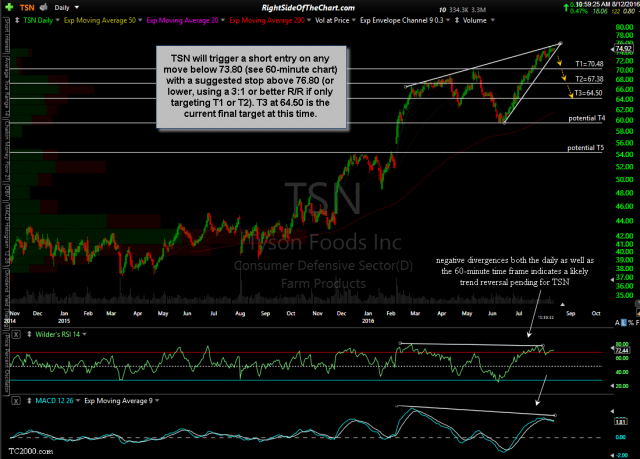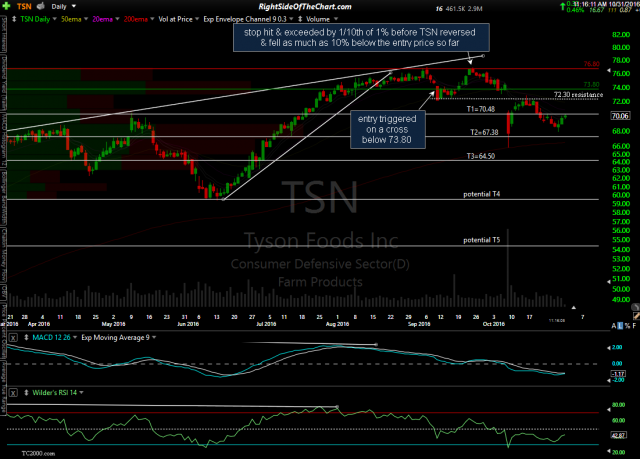In updating the trade ideas today, I noticed that although the TSN short trade appears to have already hit the second price target, falling as much as 10% below the short-entry trigger of a move below 73.80, this trade should have been listed as stopped out late last month when the suggested stop of any move above 76.80 was exceeded by a mere 1/10th of 1%. In hindsight, as I often do with trades based off the daily time frame, I should have specified a stop based on a daily close above 76.80 vs. any move above 76.80. As such, despite the fact that the stop was only exceeded by an extremely small margin, TSN will be considered stopped out for a loss of 4.1% and moved to the Completed Trades category.
- TSN daily Aug 12th
- TSN daily Oct 31st
For those that gave this trade a little more room on the stops & are still short, after hitting & exceeding the second price target, TSN is currently challenging the former support, now resistance level in which T1 was set slightly above (actual support/resistance is around 70.350. Should the stock continue much higher, an objective stop at this point could be placed just above the 72.30ish resistance level, which is the dotted line on the (second) updated daily chart above.
I also wanted to add that the TSN trade is representative of a common theme that I’ve noticed lately: The vast majority of trades that have been stopped out recently went on to play out exactly as the charts had indicated shortly after the objectively placed stop-loss levels were hit. That is largely a function of the fact that the broad markets have been chopping around in a sideways trading range (which increases the odds of stops being hit by a small margin due to the price gyrations) but I would also highly suspect that some of these recently stopped out trades were the result of stop-raids by the large institutional trading firms that have the buying power to move a stock up or down to the levels where large clusters of stop-loss orders are placed, thereby allowing them to run the stops (and unload the long positions that they had accumulated in order to move the stock higher) while taking advantage of those “guaranteed” buyers (the shorts) by selling their long positions as those buy-to-cover stop-loss orders were hit (and quite likely, re-positioning from long to short at that time).
As this had been a fairly consistent trend lately, I may modified my trading plan by slightly widening the stops on some of the new trade ideas and possibly some of the existing active trades going forward until the market begins to trend & this choppy sideways range is behind us. That means that some of the stops on the trade ideas going forward may be calculated using an R/R below the typical minimum R/R of 3:1 until a fairly clear directional trend emerges.



